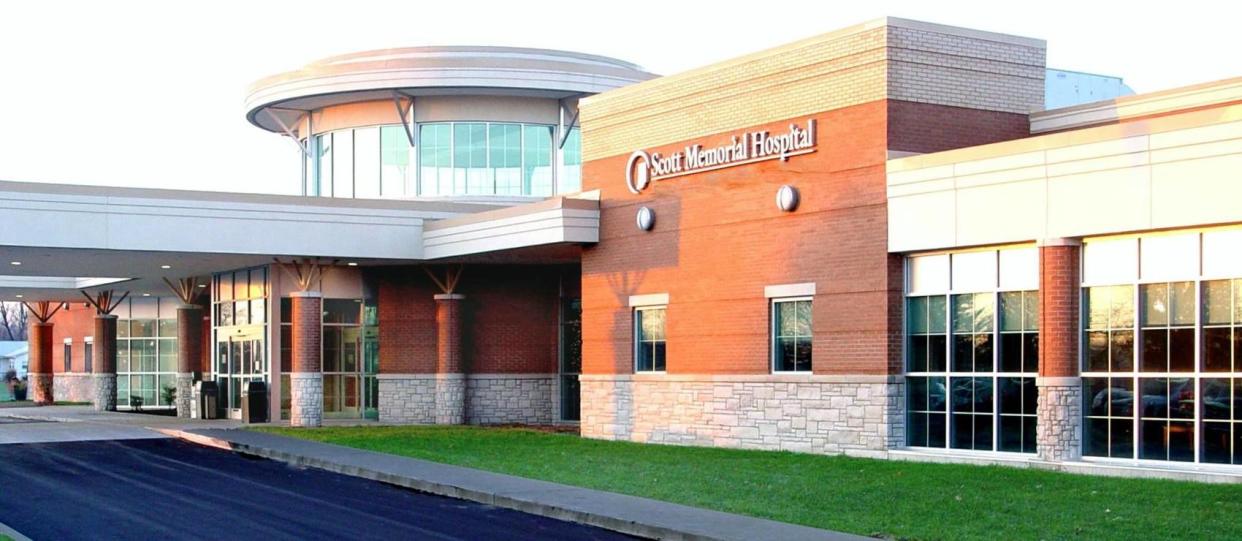Rural counties face their own challenges in the coronavirus pandemic. Here's how one is coping.

In 2014, rural Scott County, Ind., 80 miles south of Indianapolis, was the site of one of the largest HIV outbreaks in recent years outside of big cities, apparently due to opioid users sharing hypodermic needles. The county is still recovering but now faces the possibility of another deadly epidemic: COVID-19.
As of Tuesday, March 17, the Scott County Health Department announced on its Facebook page that the coronavirus had not been detected in the community yet. By Friday at around noon, it had confirmed the first case, later described as a patient in their 50s with preexisting conditions who died from the coronavirus, becoming one of 12 deaths reported by the Indiana State Department of Health so far.
Although the scale of the outbreak, at least so far, is much lower than that in some big cities, rural counties face distinctive challenges in coping with an epidemic of a life-threatening disease, and public health officials are just as worried as their colleagues elsewhere.
“We are working very hard with our local partners to combat the spread of this virus,” Michelle Matern, the Scott County Health Department administrator, told Yahoo News. “We are treating this like a pandemic flu.” And to educate and keep the community informed about the coronavirus, the county’s health department has been providing important information via its social media pages.
One of the biggest challenges for rural places like Scott County is that health care access is limited. There is one 25-bed hospital for its 24,000 residents — i.e., about one bed per 1,000 residents. The U.S. average is around 2.9 per 1,000.
Scott County Memorial Hospital is considered a “critical access hospital,” a designation given to eligible rural hospitals by the Centers for Medicare and Medicaid Services (CMS) that Congress created in 1997 in response to a series of rural hospital closures during the 1980s and early 1990s. These types of medical facilities serve one-fifth of the U.S. population.
For a hospital to have this designation, which allows for increased Medicare reimbursements, it must meet certain criteria. For instance, it must have 25 or fewer beds, be located more than 35 miles from another hospital and maintain an average length of stay of 96 hours or less per patient.
Erika Rogan, a senior associate director with the American Hospital Association Rural Health Services, described the importance of these medical outposts. “Many individuals living in rural areas, some of them are traveling 30 minutes, 60 minutes or more to get to the closest hospital. So the idea of critical access hospitals is to lessen that travel burden and have and maintain services in the community itself.”
There are problems associated with limited testing for COVID-19 all around the U.S., but in places like Scott County, which already lack resources, this problem is particularly pronounced.
Melanie Robbins, 47, lives in the small town of Underwood in Scott County. A few days ago, her 15-year-old daughter developed symptoms similar to those of the coronavirus: “Her chest hurt when she was breathing and her throat hurt.” Robbins sought an appointment with a local clinic, but it did not take her insurance. She proceeded to call the local hospital and brought her daughter to the emergency room. “We were able to go straight in, and there was no wait,” said Robbins. “The attending physician there stated, there is no testing, there’s no way to test her.” Since Robbins’s daughter did not have a fever and was not in respiratory distress, she was discharged home.
Robbins is one of many Americans who have felt scared and want answers when their loved ones are feeling sick. But health officials are warning people not to drive to the ER to request testing unless they are experiencing severe symptoms. “We don’t want to inundate our emergency department with mild cases,” Matern said.
This inability to test highlights the difficulty of tracking the spread of the coronavirus, which has been a challenge throughout the country but especially in limited-resource locations.
In the face of the pandemic, Rogan told Yahoo News, CAHs are being given certain waivers to boost their capacity and better manage a possible coronavirus outbreak in the communities they serve: “One of the waivers that’s already been issued is to allow critical access hospitals to have more than 25 beds so they can use other beds for inpatient care or they can acquire additional beds and they won’t be out of compliance.” Another waiver Rogan mentioned is an extension to the average length of stay per patient. Patients with COVID-19 may need intensive care for a week or longer.
Since the Scott County Health Department announcement of its first case and death related to COVID-19, Robbins says, she’s been staying at home and doing her best to remain positive. “There’s a lot of confusion and panic out there, but I do hope people take it seriously and do what the government is telling us to do. Stay home, keep your people at home.”
_____
Read more from Yahoo News:


